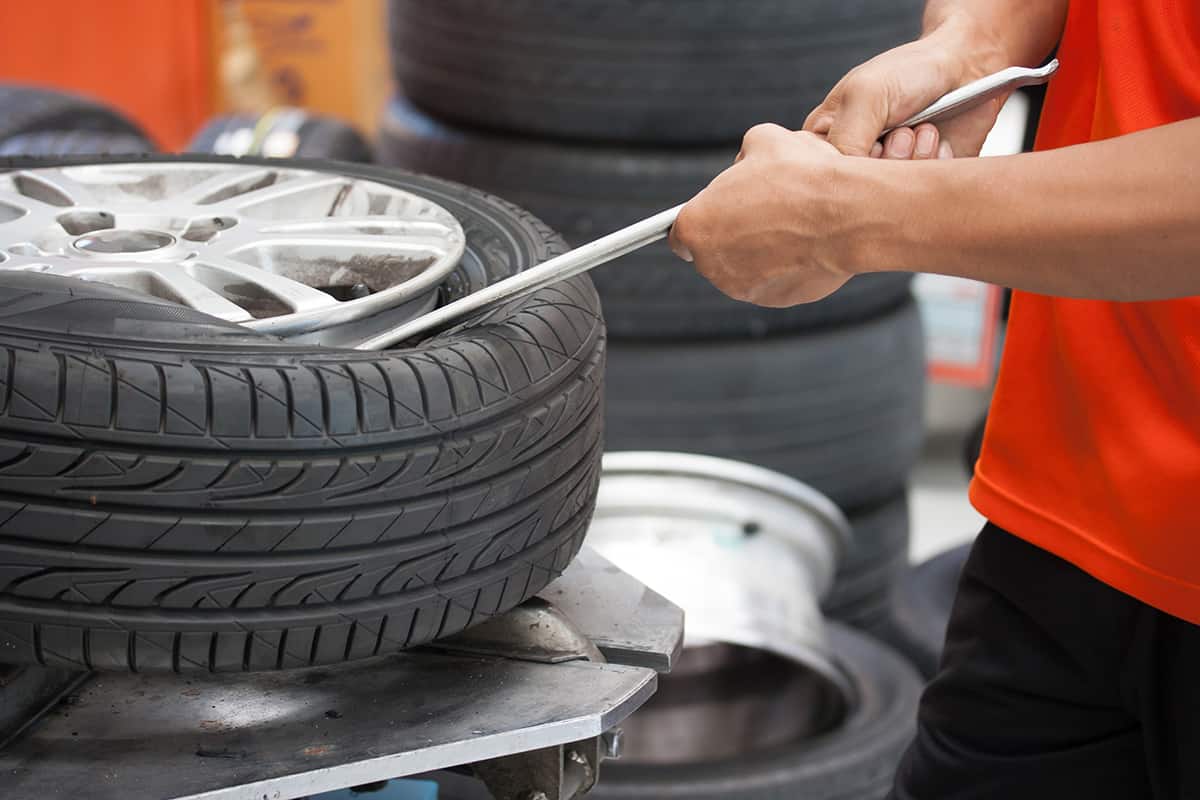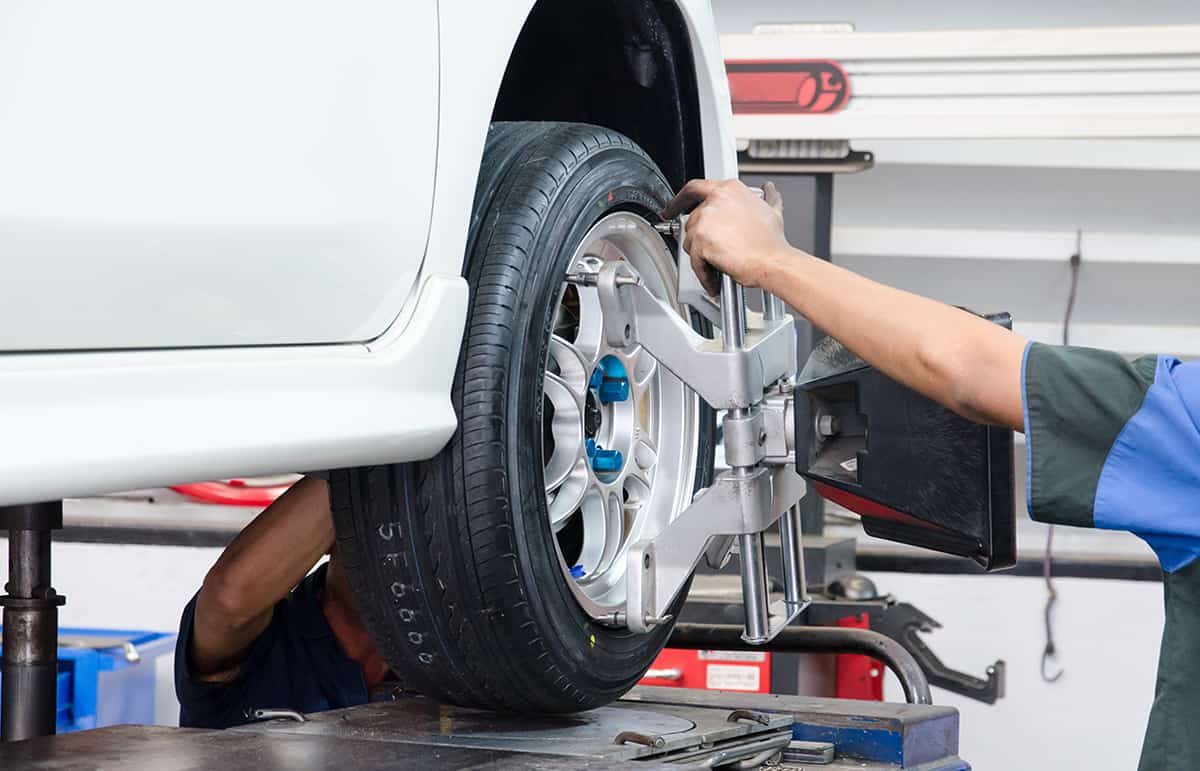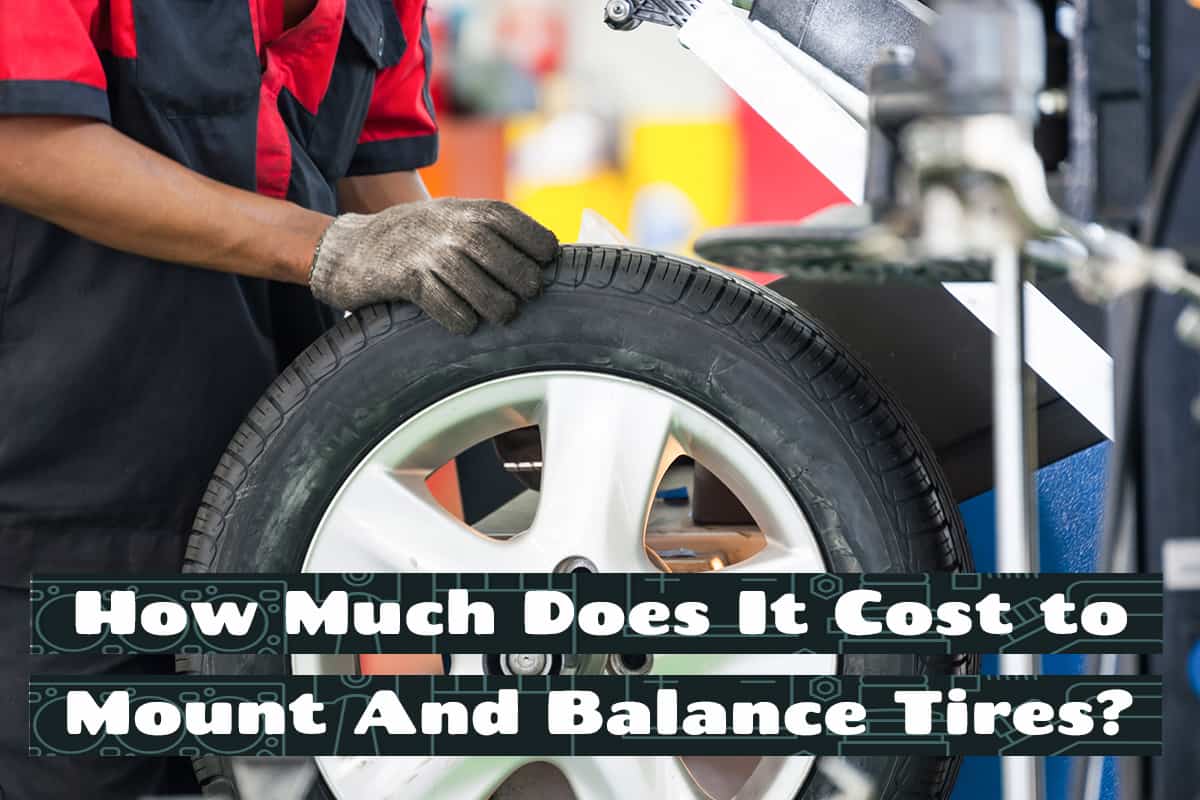Whether you’re an everyday driver or a car enthusiast, understanding tire mounting and balancing is key. These two processes ensure your tires wear evenly, increase their longevity, and ultimately provide you with a smooth and safe ride. However, many people overlook the importance of these tasks and, more importantly, aren’t aware of their costs.
On average, you can expect to spend between $60 to $100 for both mounting and balancing four tires.
This article will discuss the cost aspects of tire mounting and balancing. From understanding what these procedures entail to knowing their individual costs, this guide will provide you with comprehensive insights.
Understanding the Basics
To fully grasp the costs of mounting and balancing tires, we first need to understand what these processes entail and why they’re necessary. It’s not just about replacing worn-out tires; it’s about optimizing your vehicle’s performance and ensuring your safety on the road.
What is Tire Mounting?

Tire mounting is the process of putting your new or repaired tires onto the wheels of your vehicle. It’s a task that requires professional skills and tools to ensure it’s done correctly and safely. The process starts by removing the old tire from the wheel rim, followed by inspecting the wheel for any damage.
The new tire is then placed onto the rim, making sure it fits snugly and correctly. The valve stem is replaced, and the tire is then inflated to the recommended pressure. Finally, the mounted tire is reattached to the vehicle.
This task is not as simple as it sounds. Different types of tires and rims require specific knowledge and handling. For instance, performance tires, low-profile tires, and those with larger diameters or run-flat technology present unique challenges that demand professional expertise.
What is Tire Balancing?

Once the tires are mounted, they need to be balanced. Tire balancing is the process of equalizing the weight of the tire and wheel assembly so that it spins smoothly at high speed. Even a tiny imbalance can cause vibration, resulting in an uncomfortable ride, accelerated tire wear, and unnecessary strain on your vehicle’s suspension.
Tire balancing involves attaching small weights, only a few ounces at a time, to the rim. These weights counteract any heavy spots and bring the tire into balance. The process requires precision instruments to detect imbalances, making it another task best left to professionals.
The Costs of Mounting Tires
On average, tire mounting can cost between $15 to $25 per tire. This cost includes services such as removing the old tire, mounting the new tire onto the wheel rim, and inflating the new tire to the correct pressure.
The Costs of Balancing Tires
The cost to balance a tire typically ranges from $10 to $20 per tire. This includes using precision equipment to locate imbalances and attaching the necessary weights to the rim.
Factors Influencing the Cost of Mounting and Balancing Tires
- Tire Size and Type: Smaller, standard passenger car tires are usually on the lower end of the cost range, while larger tires such as those used on SUVs, trucks, or performance vehicles can be on the higher end. Run-flat tires, low-profile tires, and specialty tires can also carry an additional charge due to the specialized handling and equipment required.
- Location and Provider: Prices can vary depending on where you live and the service provider. Dealerships usually charge more, while independent auto shops and discount tire stores may offer lower prices.
- Additional Services: While not typically included in the basic tire mounting fee, services such as tire disposal, valve stem replacement, and wheel alignment checks can add to the overall cost.
How Often Should You Mount and Balance Your Tires?

Now that you have a rough idea of how much you’ll spend mounting and balancing tires, it’s not time to learn when you should balance them.
Signs Your Tires Need Mounting or Balancing
- Vibrations: If your steering wheel or seats vibrate when you reach a certain speed, it could indicate an imbalance in your tires.
- Uneven Tire Wear: Irregular wear patterns on your tires are often a sign of imbalance. Uneven tire wear can lead to reduced grip, increased braking distances, and a higher risk of puncture.
- Tire Damage: Any visible damage like cuts, punctures, bulges, or objects lodged in the tire will require immediate attention. You may need to mount a new tire if the damage is beyond repair.
- Age: Over time, tires naturally lose balance due to wear and tear. If you’ve been driving on the same set for a while, it might be time for a balance check.
Recommended Frequency for These Services
Generally, it’s good practice to balance your tires every time you mount new ones, after a tire repair, or when you notice any signs of imbalance. Most tire manufacturers and automotive professionals recommend balancing your tires every 12,000 miles, or at every tire rotation. Some suggest doing it every 6,000 miles or whenever you change your oil. Ultimately, the frequency depends on your driving habits, road conditions, and vehicle type.
Tire mounting, on the other hand, doesn’t follow a regular schedule like tire balancing. You should only need to mount new tires when your current ones are worn out, damaged beyond repair, or no longer suitable for your driving conditions.
However, keep in mind that not all four tires wear at the same rate. The front tires tend to wear faster than the rear ones because they bear the brunt of cornering forces and carry more of the vehicle’s weight. Rotating your tires regularly can help them wear more evenly, extending their lifespan and improving vehicle performance.
FAQs
1. Can I mount and balance tires myself?
While it is technically possible to mount and balance tires yourself with the right equipment and knowledge, it’s generally not recommended for most people. Tire mounting and balancing require specific tools, technical skills, and an understanding of the safety procedures. Incorrectly mounted or balanced tires can lead to driving instability, uneven tire wear, or even blowouts.
2. How long do mounting and balancing tires take?
The time it takes to mount and balance tires can vary depending on several factors, including the type of tires, the equipment used, and the professional’s experience level. However, on average, it takes about 15 to 20 minutes per tire. So, if you’re getting all four tires mounted and balanced, you can expect it to take around an hour to an hour and a half.
3. Can unbalanced tires damage my car?
Yes, unbalanced tires can potentially cause damage to your car. When tires are unbalanced, they can cause vibration that becomes increasingly severe as your speed increases. This vibration can lead to accelerated tire wear, reducing its lifespan. Furthermore, it can put additional stress on the suspension, bearings, and wheel assembly of your car, leading to premature wear and tear of these components.
4. Should I rebalance my tires after hitting a pothole?
If you hit a pothole hard enough, it could potentially affect the balance of your tires or even cause structural damage. Signs that you may need to rebalance your tires after hitting a pothole include new vibrations while driving, unusual noise, or uneven tire wear. If you notice any of these symptoms after hitting a pothole, it’s advisable to have your tires checked and rebalanced if necessary. Remember, when it comes to safety, it’s always better to err on the side of caution.






